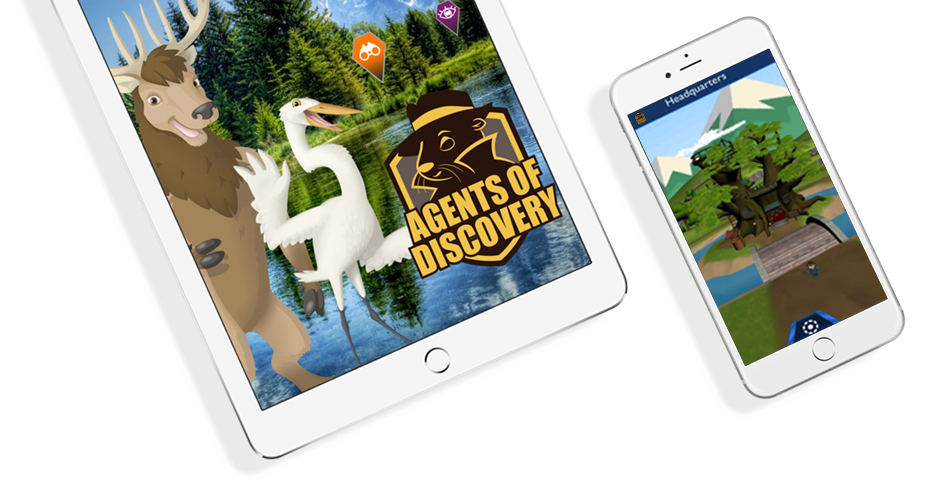Technology
A handheld gateway to Alaska history

“Agents of Discovery: Mission 49” debuted in April at the SLAM (Photo: Agents of Discovery)
JUNEAU, Alaska — Following the direction of a Northern Flying Squirrel who happens to be a secret agent, fifth-grader Kajson Cunningham counted double-headed eagle crests on Peter the Great’s cape.
Peter the Great didn’t seem to mind. After all, he passed away almost 300 years ago.
He displayed the cape proudly in a portrait at the Father Andrew P. Kashevaroff State Library, Archives and Museum.
“Five,” Kajson said.
“Six,” his companion Aiden Pietan said.
“Do all these count?” Kajson’s older brother Keelan Cunningham said, pointing to the cape.
The Cunningham children and Pietan, a group of homeschool students aided by the Cunningham’s mother Amber, were trying to answer a question posed by a new U.S. Forest Service app which aims to bring Alaska children closer to the state’s history through scavenger hunts and quizzes. “Agents of Discovery: Mission 49,” debuted in April at the SLAM.
The idea behind Mission 49, USFS Heritage Program Leader Keri Hicks said, is to teach kids Alaska history by meeting them where they’re at: on their phones.
“It’s just a way to try and engage kids with technology. The way Agents of Discovery phrases it is ‘move to play to learn.’ So they’re moving. They’re doing something that they’re engaged in and interested in with the screen but they’re still learning and moving around,” Hicks said.
The project was 18 months in the making. Forest Service personnel worked with SLAM curators and experts to develop the app contents.
Questions range from the age of Alaska Native woven basket fragments to which two Alaska islands were invaded by the Japanese in WWII.
It corresponds with the USFS “49 historic sites in the 49th state” campaign, which aims to raise awareness and appreciation for Alaska’s many historic sites, which the USFS cares for.
Some of the sites are known, like the Baranof Castle site in Sitka. The Forest Service keeps the exact location of others hidden to protect their archaeological integrity, Hicks said.
Mission 49 is a great way to experience and connect with all of the sites, but it especially fills the gap for those wishing to visit protected and remote sites by allowing a glimpse into the past.
“The history and stories of some of these objects apply to the history of the 49 sites in the 49th state,” SLAM chief curator Addison Field said. “It’s great for us to bring some of these sites that are really very remote.”
The Agents of Discovery app is free to download and there are no in-app purchases. Agents of Discovery also has a mission for the Mendenhall Glacier, which premiered last year. That app, USFS personnel say, should be downloaded before visitors make the trip to the glacier as the visitor’s centre there doesn’t have fast enough WiFi to download the app.
So, how many objects in the Russians in Alaska exhibit have a double-headed eagle on them? The answer is 5-10. Though there are many more crests to be counted in the Russians in Alaska exhibit at the SLAM, the question posed is how many objects contain the Russian double-headed crest, not how many crests there are.
Call it a lesson in following directions.





















